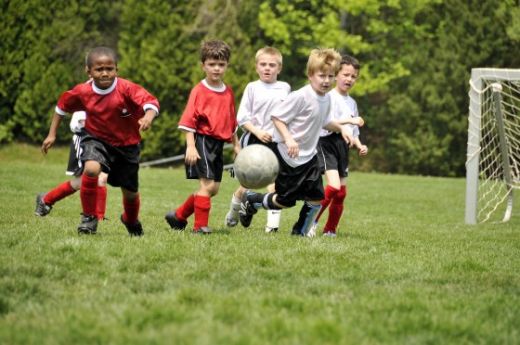Poaching is the illegal taking or tapping up of players contrary to league laws.
Which leads me to discuss poaching as its known in Irish soccer circles. I always taught poaching was an easy tap in or being in the right place at the right time. i.e. a Lineker or a Keane etc.
From July 1st its open season again and below will you find some tips, if you’re thinking of moving your child to a new set-up.
Under age Poaching
Poaching at underage age football in Ireland has be going one since I played football. The carry on is laughable, from managers ringing other managers to warn them off their players, managers ringing parents promising them trials at the best clubs in the world or aggressive managers just ringing none stop and offering parents an ultimatum. And then you have the weekly expenses, ipads, washing machines and boots etc.
In fact the entire pre-season is somewhat similar to a cattle market, players are talked about, managers are looking for the best stock with the most potential.The only differnece is usually livestock are sent to market because they have reached their slaughter weight and are at the end of their productive life, either for milk production or breeding and are to be sold for further fattening, breeding, milking etc. In our case its the opposite, the player is at the start of his productive life, still learning his trade and hopefully developing into something special, with hope that he/she maybe one day gone on to play in the League of Ireland or for Ireland.
 The Poacher
The Poacher
The poacher has only a few weeks to do his trade and try and convince the player of a better opportunity, he must also convince the parent/guardian of the child that moving clubs will benefit the boy/girl in the long run. This decision has to be the right one or else it can be catastrophic for the player.
Of course a lot of parents think they’ve got the next Robbie Keane, and the talent scouts for the big junior clubs are happy to go along with that. They go as far to promise the earth, if little Robbie will go with them. They tell them the fees will be covered and even promise to buy the mother a new washing machine. Some clubs are brilliant at it and some not so good, but all with one intention to get the best players no matter what age, playing and winning league and cup titles for their club.
Some clubs have the credentials, they have the pulling power, the facilities, the coaching structures and a good reputation of success, others are great at convincing naive parents about the future possibilities for their son or daughter.
 The Big Switch
The Big Switch
The decision you make for your child or in fact the child makes for himself, must have the child best interest at heart. Your child may be one of the best player at his current team and enjoys having that responsibility – moving to a another team, he may not be the number one player or have as much responsibility as before. He/she may find it hard not to be the center of attention.
See some things to consider when moving clubs:
- Most elite teams have 2-3 players who stand out more then the rest, you child may have been one of these players in his previous club and now finds himself down the pecking order. This sometimes can be hard to deal with.
- He/she may have to work his way into the starting line up, again this may not have been the case previously. This could have an effect on his/her confidence.
- A whole set of new players and coaches to get to know and sometimes at the younger ages this can be difficult to adapt too.
- The coaching will most likely be different and may not be as enjoyable as before or may be even more enjoyable.
- Are the coaches experienced or just good poachers, If you really want to know whether you’ve made the right choice for your kid, you need to attend training. That is where you will see the coach in action. You’ll see how they are being taught and how the players are being treated. You won’t be dependent on your kid to relay accurate information.
- Don’t sign straight way, make sure your child is happy before you sign the dotted line.
- Ask about the ratio of kids to coaches. Eight to ten kids per coach would be ideal. You definitely wouldn’t want it to be higher than 14 kids per coach.
- Most top clubs now a days have good facilities and structures and require that coaches be trained and garda vetted but no harm in asking and checking to see where they will be training etc
- Are the training session planned, are they organised, fun, age and skill level appropriate.
- If you aren’t satisfied, take a look at the with neighboring teams. It may be worth a little extra drive time to get your kids in a better set-up.
- Speak to other parents and ask them about the club and the coaches. You are putting your child in the hands of these people, you have a right to know.
- Be as honest as possible with your current club, good coaches want to see their players progress even if it means moving to a better level of football. A coach/club should always leave the door open for any player who wants to see if they can move up a level or try a new club. If players feels they are always welcome back, then it makes things easier for everyone concerned.
- You must remember to be respectful to your current club and communicating will always make things better. People like to speculate, so best to get in there early and let the manager know. After all, he has been giving up his own time to help you.
- Make sure he/she is really wanted and its not just a ploy to get his/her best friend to the club and using you as a screen.
- They must want to move and not be forced or pressurised in any way. Change is good but it must be his/her decision.
- Check to see what the managers plans are, is he a win at all costs type manager or does he develop the kids properly and try to play football, allowing them to take risks and be expressive. Make sure he is not just picking the bigger stronger guys over the smaller more technical ones. Proper coaching and encouraging kids to get on the ball, always win out in the long run.
- If its the case that they have been asked to move from the B team to the A Team again consider all of the above.
- Ask you child how he/she feels about the situation and then ask the question again after a few weeks with his new club.
“Sometimes questions are more important than answers.”
Remember if you child is not having fun or playing with a smile then they won’t be performing at their best and this can lead to him/her not getting on the team. The most important thing for any child playing sport is that they are enjoying themselves and playing regularly. They are not always going to play well, kids have off days too; once they are having FUN, learning and smiling, that’s all that counts.
Being a sports parents is not easy and driving your child or children to and from training needs to be considered. The worst thing you can do is start missing work because of your childs sport. It has to be the perfect fit, for you and your child……..Remember to consider your life, as well as you child’s.
“Example isn’t another way to teach, it is the only way to teach.”
Good luck for the season ahead and remember soccer should be about playing and not winning.
-End
I always like to hear your opinions and views. If you feel you have something to say, please comment below or email me info@thecoachdiary.com If, you don’t have anything to add then please forward this on to a friend. As always, thanks for reading.
I’m also on twitter @Coachdiary











